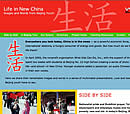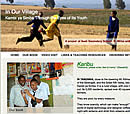A few of the more than 10,000 photos taken by hundreds of WKCD photographers around the world.
"How do you make the camera snap?" - Prakash, 14
In 2005, WKCD traveled to a small village in Tanzania to work with secondary students on creating a photo essay about life there. Since then, we have carried digital cameras and tape recorders to Bangladesh, Beijing, Ethiopia, London, the Czech Republic, Hungary, Romania, South Africa, Bangalore and Delhi, India—and the smallest village in Japan. Our youth collaborators range from Afro-Caribbean and Muslim immigrants in London to teens living in a homeless shelter in Pretoria, South Afria. We have traveled the globe.
The author Thomas Friedman says we live in a “flat world.” Many of the youth who have participated in these WKCD photojournalism projects would agree. They’d point to the ubiquity of mobile phones, jeans, fast food, CDs and DVDs. They’d show you their photos of “side by sides”: how the old and new, Eastern and Western, traditional and modern, global and local compete for space in cities across the globe—from Beijing to Nairobi.
In the same breath, they would tell you that the differences are still vast, often heartbreaking.
They'd say the gap between the rich and poor, urban and rural, the developed and the developing world seems to have grown as much as it has shrunk. The youth contributing to our Global Youth Voices collection include comparatively affluent teens in Beijing along with the sons and daughters of agro-pastoralists in rural Tanzania; young Burmese refugees in a Bangladesh border camp along with university students in cities across Hungary; Roma (“gypsy”) youth in Transylvania, Romania fighting against centuries of discrimination and high school students in Noida, India hoping to become part of their country's new economy. They remind us of the complexities of culture and politics, and how they infuse what we value, what we take for granted, and what amazes us.
WEBSITES
|
|
|
Everywhere you look today, China is in the news. But how much do we know about the daily life there? Several years agoWKCD, with support from the Asia Society, spent two weeks with students at Beijing No. 12 High School creating a series of photo essays about life—and school—in New China. Younger students added a postscript: an audio Chinese-English dictionary in their own voices. Here WKCD shares their remarkable images and words in a series of multimedia presentations. (Note: We have had difficulty maintaining the integrity of this site. Two of links embedded in the site no longer work: Dictionary and Teaching Resources. Please access them through the links below.) |
|
| InOurVillage.org
In Tanzania, close to the towering Mt. Kilimanjaro, the vast plains of the Serengeti, and the Great Rift Valley, lies a village called Kambi ya Simba. It is a rural village, with one road in and one road out. Its 5,000 residents, spread over 40 square kilometers, are farmers. For two years, WKCD worked with students at Awet Secondary School in Kambi ya Simba to document daily life in their village, with digital cameras and tape recorders. This website offers a virtual visit to this East African village, through the eyes of its youth. |
|
| InOurGlobalVillage.org
The Tanzanian students who produced In Our Village: Kambi ya Simba Through the Eyes of Its Youth doubted that anyone outside their small village would care about their lives and challenges. Over 50 groups of teachers and students around the world are proving them wrong, creating their own In Our Village books and sending a copy to the students in Kambi ya Simba—and sharing them online. |
|
| ADOBE YOUTH VOICES | |
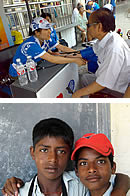 |
WKCD's Adobe Youth Voices Portfolio
As a founding member of Adobe Youth Voices (AYV), What Kids Can Do (WKCD) not only worked with youth in the United States, but also with youth in six other countries—helping them capture and share their corner of the world. “Show us your lives,” we asked students, when we sent digital cameras to our partner organization in each country. “Help us see the communities you belong to.” These novice photographers eagerly set out to do so, passing cameras among themselves and together discovering how to frame their world through a new lens. The extraordinary collection of multimedia pieces show a rising generation seeing its world anew, at a certain moment in places far and wide—from Beijing, Hungary and India, to London, Prague and Romania. In 2009, WKCD teamed up with Adobe Youth Voices to sponsor an international photo competition. |
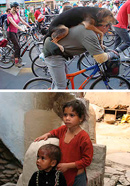 |
A Mini-Curriculum: Fresh Takes on a Flat World, The Stories Photos Tell
As part of WKCD's partnership with Adobe Youth Voices, we developed a “mini-curriculum” for teachers that would tap this incredibly rich collection of youth photography—and make it a spark for classroom learning and discussion. In a series of short lessons, students use the photos—culled and grouped in three collections from the over 15,000 photos in our image bank—to: appreciate and analyze the stories photos tell; develop and improve observational skills; expand cultural understanding; hone critical thinking skills; and practice writing The lessons are suitable for grades 5 to 12, adapted by the teacher as necessary. We also believe they offer a unique platform for language learning in ELL classrooms. |
| PHOTO ESSAY BOOKS | |
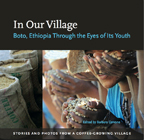 |
In Our Village: Boto, Ethiopia Through the Eyes of Its Youth—Photos and Stories from a Coffee-Growing Village (Next Generation Press, 2012)
See excerpts. Order a copy.
Few residents of Boto, a farming village in the highlands of southwestern Ethiopia, have traveled father than their feet can carry them. But their coffee circles the globe. In this inspiring book, the youth of Boto bring us inside their village with photographs and stories they gathered themselves. They have much to say and much to teach—about resioience and dreams in the face of breathtaking hardship. |
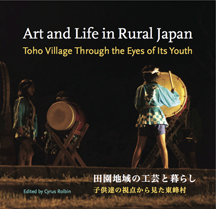 |
Art and Life in Rural Japan: Toho Village Through the Eyes of Its Youth (Next Generation Press, 2011) See excerpts.
In a remote mountain village called Toho, unknown to most in urbanized Japan, an unlikely group—the local children—has published a book to open the eyes of the world. Art and Life in Rural Japan presents a vivid portrait of life in depopulating Japan through the eyes of its youngest residents. In stunning photographs and simple first-person narrative (presented in both English and Japanese), the children of Toho make clear that they would like to stay there forever. The book is a treasure of local history, plus describes in loving detail the work of the village’s potters, daily life, celebrations and so much more. |
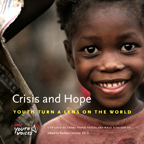 |
Crisis and Hope: Youth Turn a Lens on The World (Next Generation Press, 2010) See flip book. Written in Chinese or Japanese, the word “crisis” consists of two characters: one representing crisis or danger, the other representing hope or opportunity. In the spring of 2009, WKCD invited youth worldwide to show us, through their own eyes, what troubles them and gives them hope in their close-by world—whether a deeply etched slum in East Africa or a well-off suburb in the northwestern United States. Across four continents and sixteen countries, young people responded to our call by sending their photos and captions—crisp, light, dark. This volume gathers their acute perspectives into a compelling whole. |
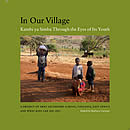 |
In Our Village: Kambi ya Simba Through The Eyes of Its Youth (Next Generation Press, 2006) See flip book. Order a copy.
The rural Tanzanian village of Kambi ya Simba, near the famed Serengeti Plains, is among the world’s poorest; with no electricity or running water, families eke a living from the soil. With digital cameras and notepads, students at its secondary school went out with WKCD’s Barbara Cervone to document village life. Their images and stories speak of resilience as much as hardship, and surprises fill every page. |
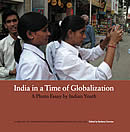 |
India in a Time of Globalization: A Photo Essay by Indian Youth (Next Generation Press, 2008) See flip book.
"How do you make the camera snap?” asked 14-year-old Prakash. Over the next several months, Prakash and his classmates in Bangalore, along with youth in New Delhi and Noida, took close to 5,000 photographs capturing daily life around them. They also gathered over 50 interviews. India in a Time of Globalization—part of Adobe Youth Voices—provides a unique window into the push and pull Indians face as their country becomes a global power. |
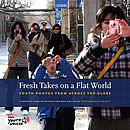 |
Fresh Takes on a Flat World: Youth Photos from Around the World (Next Generation Press, 2009) See flip book.
“I never knew how much you can say with an image,” says Seattle youth photographer Yvonne. Fresh Takes on a Flat World brings together a rich sample of the photographic art created by youth worldwide as part of WKCD’s partnership with Adobe Youth Voices. The collection has three thematic sections, mingling and juxtaposing photographs by students in far-flung sites and circumstances. Seeing in different ways, making our own connections, we all may discover something new, as the youth did who made these photographs. |
| DICTIONARIES | |
 |
Chinese-English Dictionary
As part of our work with students in Beijing, we created a one-of-a-kind multimedia Chinese-English dictionary. High school students took the photos and middle school students produced the audio. WKCD has created a flash version of the slideshow for anyone wanting to learn a bit of Chinese. (If you are using a dial-up connection, it will take awhile for each slide to load.) |
 |
Hindi-English Dictionary
WKCD’s work with students in Bangalore, New Delhi, and Noida also led to the creation of a multimedia dictionary—Hindi-English. Thirty youth contributed to the photographs and students at the Noida Pubic Senior Secondary School recorded the audio. Again, WKCD has created a flash version. |
| SPECIAL PROJECTS | |
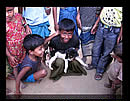 |
Project Einstein: A Photo Essay by Young Burmese Refugees (Sept 2008)
In winter 2008, WKCD sponsored two young American media makers who traveled to Bangladesh to capture the lives of youth in a Burmese refugee camp there. At the Kutupalong Camp, Mark Belinsky and Emily Jacobi helped eleven Rohingya (Burmese) children share their world through their own photographs and words. They took inspiration from Einstein, “because Einstein was a refugee but could still do great things.” |
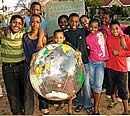 |
Hope and Challenges: Growing up in the New South Africa (August 2009) In the new South Africa, everything is different, but that doesn’t mean there aren’t problems. In fall 2008, Emily Jacobi and Mark Belinsky again set out, in behalf of WKCD, this time to Pretoria, South Africa, to gather the images and stories of thirteen young people who live in shelters there. |
FEATURE STORIES
Dispelling Stereotypes, NYC Youth Learn and Work in Africa (October 2011)
Young people from two of the highest-poverty areas of New York City—Harlem and the Bronx—recently overturned stereotypes about themselves and others by traveling to Africa to learn, work, and serve those in need. Sponsored by two separate afterschool and summer programs for youth and headed to different countries, Ghana and Mali, the teenagers in both groups saw their understanding and perspectives change markedly because of their undertaking. The Bronx youth, who traveled to Mali, also helped build an elementary school.
Small Wonders: Kambi ya Simba, Six Years Later (August 2011)
Six years ago, WKCD ’s Barbara Cervone worked with students in a rural village in Tanzania to capture daily life there. Their book, In Our Village: Kambi ya Simba Through the Eyes of Its Youth (Next Generation Press, 2006) has sold close to 10,000 copies, provided scholarship funds for over a dozen students to further their education, and spawned an international movement of teachers and students creating their own “In Our Global Village” books. And there’s so much more. . . .
Building Community, One Soccer Field at a Time (June 2010)
Professional soccer’s top competition will be played in South Africa this summer, and the country is buzzing with excitement. Not only will it be the first time The FIFA World Cup has occurred on African soil, but it also recognizes soccer’s importance to this historic land and its youth. “It’s more like a religion,” explained Kyle Weiss, 17-year-old founder of FUNDaFIELD, a nonprofit organization dedicated to enriching the lives of African youth through soccer.
One Love: Ethiopian Youth Create AIDS Education Circus (May 2009)
People joke about running away to join the circus. David Schein hadn’t exactly planned for it. But here he was, surrounded by a crowd of 2,000 in the middle of the town market in Awassa, Ethiopia, helping orchestrate the first public performance of the One Love AIDS Education Circus.
Making Waves: Youth Voluntarism in Hungary (December 2008)
What does service learning and youth voluntarism look like in Hungary? Read how youth in Miskolc, Hungary have helped turn a huge, abandoned factory block from the Soviet era into a stunning sports and cultural center for youth. And see how young volunteers in Debrecen organize six months of community events and festivals for the residents of their city.
Worlds Together, Worlds Apart (November 2008)
Cameras and recorders in hand, youth around the world are partnering with WKCD to document the traditions and the tensions of the communities they call home. The issues they raise are at once personal and political, local and global—and the fresh eyes of youth bring new perspectives to challenges old and new. We invite you to dip into this collection of contrasts and commonalities, and then to add your voice to the mix!
Youth Photography in the Mathare Slum | Nairobi, Kenya (January 2008)
Today’s news is filled with images and stories of violence in Kenya, spurred by a close presidential election whose irregularities have ignited long-standing tribal rivalries. Some of this unrest has taken place in the Mathare slum of Nairobi, considered one of the worst slums in the world. Ten years ago a visitor to the slum provided Julius Mwelu, then 12 years old, a disposable camera, and encouraged him and other Mathare youth to document daily life around them. The project is still going strong, under Mwelu’s leadership.
Burmese youth voices (October 2007)
In March 2007 a team of eight young American researchers traveled to Thailand to meet with sixteen youth-oriented organizations operating along the Thai-Burma border. They interviewed many exiled Burmese youth as part of their research and wrote a remarkable report that gives voice to the hardship and yearning for freedom these youth experience every day.
"Is All As It Seems in Paradise?": Small Island Youth Answer Back (May 2006)
White beaches, perfect weather, endless relaxation—these visions that come to mind when we think of Caribbean and Pacific islands. But for many of the youth who call these small islands home, everything is not as it seems in paradise. Schools and hospitals need repair. Environmental pollution goes unchecked. Western cultures and the tourist industry squeeze local traditions. Poverty persists. Rather than sit back and watch their governments debate these issues, the teens involved in Youth Visioning for Island Living, an interregional initiative supported by UNESCO, are speaking up.
Taking Globalization to Heart: Youth in Action Around the World (April 2005)
While international meetings like the G8 Summit grab the headlines, another big story belongs on the front page: a global explosion in communication and action among world youth. Informal or formal, provocative or affirming, this youthful embrace of globalization pulses with vitality.
"We Hereby Call Upon...": Youth Take Charge at Model U.N. (December 2005)
The Model United Nations conference in San Antonio (MUNSA) is the largest high school student-run event west of the Mississippi. Now celebrating its tenth anniversary, this year's MUNSA conference attracted eight hundred students who gathered to wrestle with some of the world's most pressing concerns: globalization, religious fundamentalism, and the spread of AIDS, just to name a few.
Living in the First Person: Peace Corps Volunteers Share Experiences and Themselves (April 2005)
Peace Corps Volunteers can be found in nearly every corner of the globe, and the jobs they're involved with are just as varied as the communities they serve—from teaching chemistry in a Ghanaian high school or promoting HIV/AIDS awareness in Malawi. Here we present several first-hand accounts of life in the Peace Corps, where cultural immersion is only the beginning.
As the Wells Run Dry, Tanzanian Youth Help Summon Political Will
(December 2005)
In rural Tanzania, East Africa, where everyone is a farmer, the effects of global warming are unavoidable. Here we present a sample of responses from teenagers in the village of Kambi ya Simba, when asked what steps should be taken to reduce the impacts of global warming.
Taking Charge: Young Social Entrepreneurs in Tanzania, East Africa (April 2005)
"Most people in developing countries are undereducated and don't understand the need for conservation," says Khamis Ali Pandu, 23. In his home village in Zanzibar, Khamis has started an organization to preserve the fragile coral reefs offshore while also supporting the fisherman and tour operators who depend on the reefs for their livelihood. In the Tanzanian town of Karatu, Regina Kalwa has started a vocational school for teenaged girls in the barest of circumstances.
Creating A World Fit For Us: Youth Take the Global Stage (January 2004)
As part of a new global "youth movement," young people are attending international gatherings in record numbers. The Internet provides these and other socially conscious youth a virtual daily meeting place, allowing the exchange of opinions, ideas, hopes, and dreams. WKCD offers here student commentary, speeches, and photographs, plus results from a recent survey of 1,400 youth worldwide.
